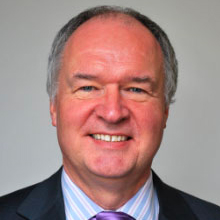10
Jun
2015
01:00
BST
Webinar
The Management of Heart Failure with Preserved Ejection Fraction
-
Views:
 804
804
-
Likes:
 0
0
Overview
Heart failure is defined as a clinical syndrome and is known to present with a number of different pathophysiological patterns. There is a remarkable degree of variation in measures of left ventricular systolic emptying and this has been used to categorise heart failure into two separate types: low ejection fraction (EF) heart failure or HF-REF and high EF heart failure or HF-PEF. Here we review the pathophysiology, epidemiology and management of HF-PEF and argue that sharp separation of heart failure into two forms is misguided and illogical, and the present scarcity of clinical trial evidence for effective treatment for HF-PEF is a problem of our own making; we should never have excluded patients from major trials on the basis of EF in the first place. Whilst as many heart failure patients have preserved EFs as reduced, we have dramatically under-represented HF-PEF patients in trials. Only four trials have been performed in HF-PEF specifically, and another two trials that recruited both HF-PEF and HF-REF can be considered. When we consider the similarity in outcomes and neurohormonal activation between HF-REF and HF-REF, the vast corpus of trial data that we have to attest to the efficacy of various treatment (angiotensin-converting-enzyme [ACE] inhibitors, angiotensin receptor blockers [ARBs], beta-blockers and aldosterone antagonists) in HF-REF, and the much more limited number of trials of similar agents showing near statistically significant benefits in HF-PEF the time has come rethink our management of HF-PEF, and in particular our selection of patients for trials.
Faculty:

Andrew JS Coats
Educational Objectives
- The epidemiology of HFpEF
- The clinical trials in HFpEF
- Why we have not improved prognosis in HFpEF despite many improvements in HFrEF
Target Audience
- Cardiologists
- Cardiologists in training
- General practitioners with an interest in cardiology
- Age care physicians
Faculty Biographies

Andrew JS Coats
Prof Coats is Joint Academic Vice-President of Monash University, Australia and the University of Warwick, UK. His research greatly influenced the treatment for chronic heart failure, promoting exercise training instead of bed rest. He has a vast experience in education and publishing.
Prof Coats attended Melbourne Grammar School and studied at Oxford and Cambridge. He has a higher doctorates from Oxford (DM) and Imperial (DSc.).
Prof Coats was appointed Viscount Royston Professor of Cardiology at Imperial College in 1996 and Director of Cardiology and Associate Medical Director of the Royal Brompton and Harefield NHS trust. Professor Coats was appointed Dean of Medicine at the University of Sydney in 2002, and subsequently Deputy Vice-Chancellor. Professor Coats was most recently CEO of the Norwich Research Park, the UK's oldest and largest research and innovation park.
Prof Coats research interests are chronic heart failure, hypertension, and organizational behaviour. Professor Coats has a MBA from London Business School, is a Diplomate and Fellow of the Australian Institute of Company Directors and member of the UK Institute of Directors.
Key References
1. Senni M1, Gavazzi A1, Oliva F2, Mortara A3, Urso R4, Pozzoli M5, Metra M6, Lucci D4, Gonzini L4, Cirrincione V7, Montagna L8, Di Lenarda A9, Maggioni AP10, Tavazzi L5; On the behalf of the IN HF Outcome Investigators. In-hospital and 1-year outcomes of acute heart failure patients according to presentation (de novo vs. worsening) and ejection fraction. Results from IN-HF Outcome Registry. Int J Cardiol. 2014 Feb 22. pii: S0167-5273(14)00371-4. doi: 10.1016/j.ijcard.2014.02.018. [Epub ahead of print]
2. Campbell RT. Jhund PS. Castagno D. Hawkins NM. Petrie MC. McMurray JJ. What have we learned about patients with heart failure and preserved ejection fraction from DIG-PEF, CHARM-preserved, and I-PRESERVE?. [Review] Journal of the American College of Cardiology. 60(23):2349-56
3. Flather MD, Shibata MC, Coats AJ, Van Veldhuisen DJ, Parkhomenko A, Borbola J, Cohen-Solal A, Dumitrascu D, Ferrari R, Lechat P, Soler-Soler J, Tavazzi L, Spinarova L, Toman J, Böhm M, Anker SD, Thompson SG, Poole-Wilson PA; SENIORS Investigators. Randomized trial to determine the effect of nebivolol on mortality and cardiovascular hospital admission in elderly patients with heart failure (SENIORS). Eur Heart J. 2005 Feb;26(3):215-25
4. Cleland JG, Tendera M, Adamus J, Freemantle N, Polonski L, Taylor J; PEP-CHF Investigators. The perindopril in elderly people with chronic heart failure (PEP-CHF) study. Eur Heart J. 2006 Oct;27(19):2338-45
5. Yusuf S, Pfeffer MA, Swedberg K, Granger CB, Held P, McMurray JJ, Michelson EL, Olofsson B, Ostergren J; CHARM Investigators and Committees. Effects of candesartan in patients with chronic heart failure and preserved left-ventricular ejection fraction: the CHARM-Preserved Trial. Lancet. 2003 Sep 6;362(9386):777-81





